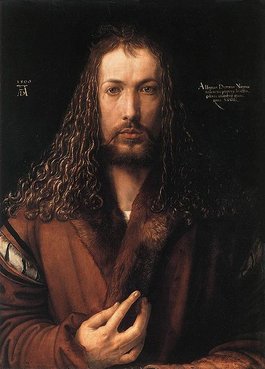Albrecht Dürerwas a German painter, printmaker, talented artist, and theoretical writer. He was born on the 21st of May 1471 in Nuremberg to a goldsmith father. He was conventionally regarded as the greatest artist of the Northern Renaissance during his 20’s because of his outstanding prints which gained reputation across Europe. In 1486 at the age of 15, he became an apprentice of Michael Wolgemut, a leading artist in Nuremberg at that time. In 1494 he was married to Agnes Frey at a very young age of 23. He travelled to Italy within three months to further study about the artistic world. When he came back to Nuremberg in 1495, he opened his own workshop there. On July 1521, upon returning from his journey to the Netherlands to secure his pension, he contracted an undetermined disease which affected him greatly for the rest of his life and reduced his rate of work. He produced little as an artist during the last years of his life in contrast to his early years. He died on the 6th of April 1528 at the prime age of 56.
Although Dürer is most famous in his woodcut illustrations, he also made several paintings. He also created three self-portraits during his lifetime. He was a realist painter at the time, and travelled to different places in order to learn different techniques about painting. Most of his works centered on Roman Catholic life, since he was a Roman Catholic himself with very strong beliefs. His use of watercolor in his paintings made him as one of the European landscape artist and his woodcuts transformed the potential of the medium. He also introduced the classical motif into Northern art, thus acquiring his status as one of the most important figures of the northern renaissance. Later, he learned how the chiaroscuro modeling effect and used it in his successive paintings. He also created such portraits in tempera on linen.
One of his major works was his self-portrait, which was painted in 1500 right before his 29th birthday. It was a self-portrait which then was known as Self-Portrait in a Wig or Self-Portrait at Twenty-Eight Years Old Wearing a Coat with Fur Collar. It was considered as symbolic, personal, and also the most complicated of his self-portrait paintings. This self-portrait became popular because it is arrogantly suggesting of divinity because of its high resemblance to many representations of Christ in early years. The dark fields on both sides of the painting depict the highly symbolic meaning of the portrait. The use of the brown tones that was set against the plain black background gives a somber mood. In this self-portrait, it is seen that Dürer’s style of painting had developed into classicism, as was said by an art historian named Marcel Brion.
Dürer is most influential and remembered through his talent in printmaking because this was the main avenue where his colleagues witnessed his art. He had made many paintings but most of them were held as private compilations in selected cities. In the world of painting, Dürer left a minor impact in Italy but his best piece was the altarpiece in Venice. His deep and melodramatic self-portraits did make a powerful impact even up to this time as more artists created dramatic self-portraits of their own.
Author: Shyxter
